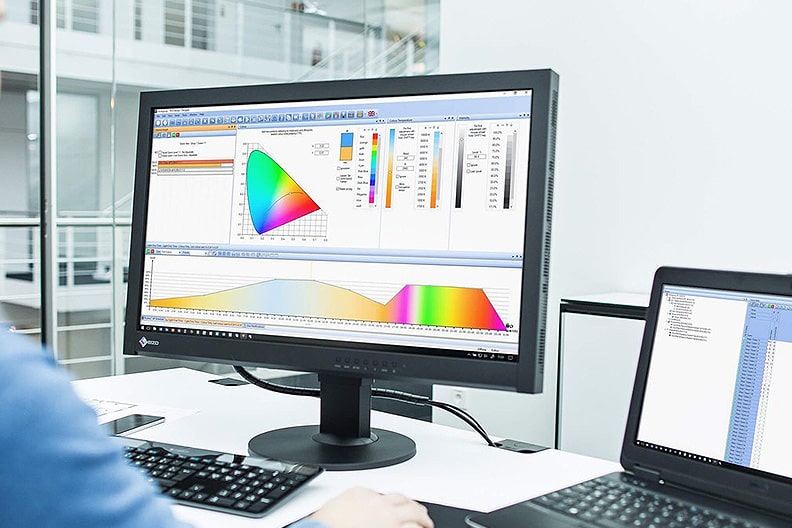When planning lighting control with DALI, the focus nowadays is often on the pure function. Within HCL (Human Centric Lighting) there is frequently a demand for control of the colour temperature of accent lighting with saturated light colours. During the planning phase the user should always bear simple maintenance of the lighting installation in mind. It saves time and money if you can make adjustments yourself. But to do this you need expert knowledge.
Open DALI standard
DALI is the standardized lighting interface in IEC 62386. Compatible devices are low in price, robust and easily available. There are stand-alone DALI lighting controls and numerous Gateway solutions in nearly all relevant building automation systems.
For this reason DALI is aways a point of discussion in nearly every planning project for large functional buildings. However, even in the residential sector DALI is being used more and more, since, precisely when it comes to LED lighting, the function is guaranteed by being integrated directly in the DALI luminaires. There is no longer any need for complex compatible combinations of LED power supply, LED dimmer and LED module. The relevant functions are already integrated into the control gear. The strength of DALI becomes especially appparent with colour-variable luminaire combinations.
DALI control gears are classified as standard in different types of device. LED control gears and luminaires are assigned to device type 6. Device type 8 is for colour-controllable luminaires. Colour control is standardized in DALI, which is especially important when colour control should span devices from different manufacturers to ensure that all the luminaires emit the correct light colour in the required intensity.
Controlling and commissioning DALI luminaires
It is possible to control in the brightness of luminaires in different ways using broadcast control or group and scene control. DALI operates according to the Master/Slave principle. The master can be a simple broadcast control device, such as the rotary control knob which can make a luminaire brighter or darker. The Master can however also represent complex lighting control. This might consist of many elements which communicate with each other in a superordinated network. If one DALI device fails, all project data previously saved, such as group membership, fading times or scene values have to be restored.
In broadcast control all the luminaires which are physically connected to each other are triggered simultaneously with direct brightness values. In the DALI standard a broadcast address is set by default. All DALI luminaires obey commands which are broadcast-addressed, whatever address they themselves possess. Thus, it is not necessary to address and configure the luminaires. Faulty control gears can be replaced easily by new ones.
In group and scene control the group allocation and the light scene values are stored in the control gear. The same is true for further parameters. Then the luminaires have to be addressed. When commissioning this is very complex because the luminaires must first be identified and then configured. As a rule, configuration of a DALI line is performed by the Master via PC software according to the principle of random address allocation.
Colour control device type 0 or 6
For DALI colour control with the conventional DT0 (fluorescent lamp) or DT6 (LED) a DALI address is required for each. The DALI luminaires have to addressed and grouped. The colour is defined via value control via several DALI addresses. When such a lighting solution is dimmed, the colour information is lost and commissioning is very time-consuming.
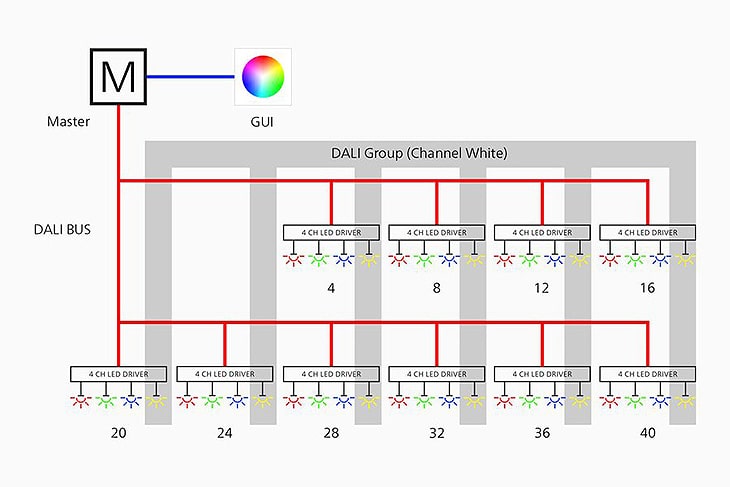
Broadcast control is only possible if galvanically separated lines are installed for each colour. This is possible with the products of some manufacturers, for example for simple colour control with two colour channels. For larger installations planning for this type of control is very time-intensive since the cable routes and the number of cables must be defined at a very early stage of the building process. It is not possible to assign to a group at a later point in time. Multi-channel control gears which are often used for LED strip lighting cannot be controlled at all via broadcast. The same applies to multi-channel luminaires for light tracks.
Colour control device type 8
Colour-controllable luminaires which correspond to the DALI Device Type 8 (DT8) can be integrated quite easily depending on the application. A DT8 luminaire has between two and six colour channels. Colour temperatures and saturated colours can be controlled relatively or absolutely. Here the primary colours of the luminaire play a decisive role.
DT8 luminaires are multi-channel but, nevertheless, are given a DALI address. Information about colour and brightness is transmitted serially to the luminaire by the DT8-compatible Master. The DT8-compatible device evaluates this information and controls the output channels individually. Colorimetric loci can be triggered more precisely using this procedure than with a simpler multi-channel value control with two or more DALI addresses. A disadvantage is the sluggish performance of this serial triggering. DALI transmits data at 1200 Bit/Sec. Compared with other systems this is very slow. This becomes noticeable first and foremost in the individual control of many colour-controllable luminaires. Here the following procedure is recommended: define groups of luminaires, distribute the colour-controllable luminaires over several DALI lines or control them without address (broadcast). This is possible it is not compulsory to provide the luminaires with an address. The colour channel allocation is firmly integrated in the control gear.
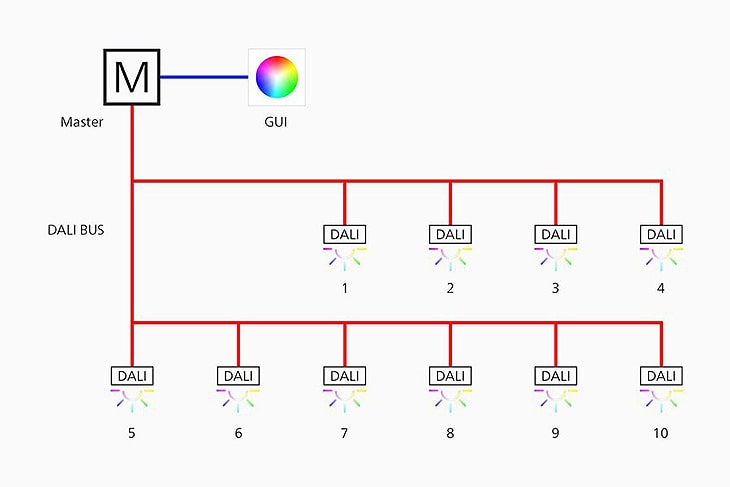
Colour control in accordance with IEC62386
Four different colour renderings enable colour control in accordance with IEC62386:
1. Primary colour (N) directly controls the luminous intensity of each output channel.
With Primary Mode it is possible to achieve favourably priced colour control since the secondary technology of the DALI control gear is comparable to conventional brightness control. This procedure is frequently used to control LED strips.
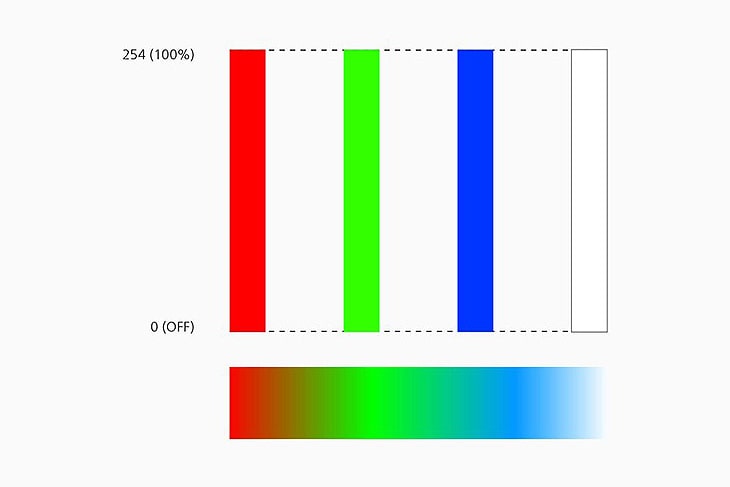
2. X/Y coordinates. Definition of a colorimetric locus with the CIE colour space.
In this mode the normatively defined colour information can be transmitted to the luminaire. One after the other (serially) the x-coordinate, the y-coordinate, the intensity and other data such as the fade time are entered into a transmission memory. When all data have been transmitted, output is activated. All the luminaires addressed in this way move towards the end value synchronically.
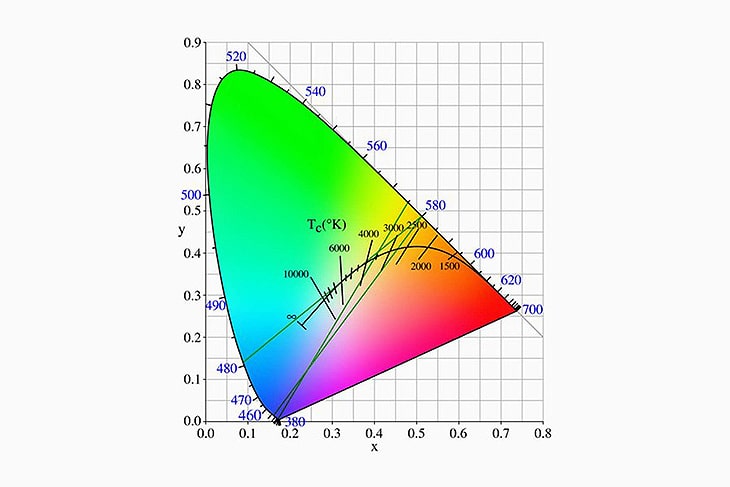
3. Colour temperature control with 2 colour channels
In this colour representation one colour temperature is transmitted directly to the DALI device. The advantage here is that the colour temperatures are not calculated in the driver. Colour temperatures can be controlled relative to the output value. For example, the brightness can be controlled by turning a knob. Pressing and rotating at the same time controls the colour temperature. Since the control gear has already been adjusted to the primary colours of the luminaire by the manufacturer, two-, three-, or four-channel luminaires can be controlled.
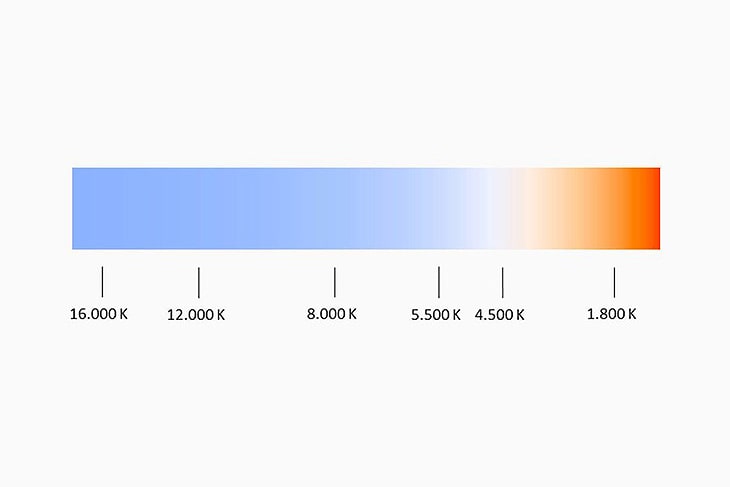
4. RGBWAF colour presentation
With RGBWAF (Red, Green, Blue, White, Amber und Freecolour) up to six primary colours can be controlled individually or in combinations. It is controlled via a transmission memory with a value range of 0-254 per colour channel.
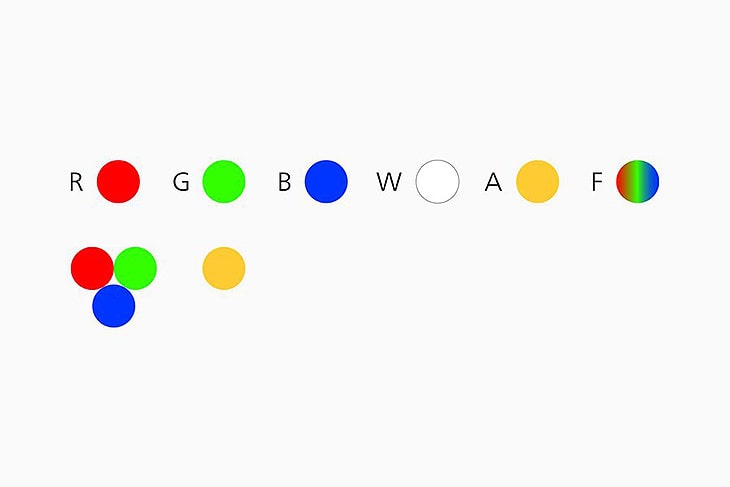
DALI: maintenance-friendly and ready for the future
Not every DALI Master control device supports specific additional commands for DT8 colour control. Not every DALI Master is the same. And not every Type 8-compatible Master device supports all four colour types. In future DALI master control devices will be defined in IEC62386. Since this is an open standard, there will probably never be a shortage of replacements for parts.
When planning colour control, steps must be taken to identify whether simple broadcast control is possible. Then faulty luminaires can be exchanged without expert help, DALI luminaires in light track in retail outlets can be repositioned or new luminaires added. A systems specialist is not absolutely necessary for maintenance, whether there is colour control or not.

